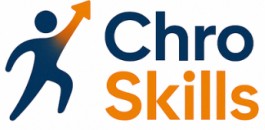
Understanding the Role of a CHRO
Grasping the Responsibilities of a CHRO
The role of a Chief Human Resources Officer (CHRO) is multifaceted, requiring a blend of strategic vision and practical management skills. As a leader, the CHRO is tasked with aligning the human resources strategy with the overall business goals, ensuring that the workforce is not only effective but also engaged and inspired. This involves a deep understanding of the organization’s culture and the ability to foster a positive work environment.
CHROs must possess a unique set of leadership qualities that enable them to navigate complex challenges and drive organizational success. These include strong problem-solving skills, effective communication, and the ability to inspire and motivate teams. The role demands a strategic thinker who can anticipate future trends and adapt the organization’s human resources policies accordingly.
In addition to these leadership skills, CHROs are expected to be adept at conflict resolution and change management. They play a crucial role in guiding the organization through transitions, whether it’s a merger, acquisition, or restructuring. This requires not only technical expertise but also emotional intelligence and the ability to empathize with employees at all levels.
Ultimately, the CHRO is a key player in shaping the organizational culture and ensuring that the company remains competitive in a rapidly changing business environment. Their leadership is instrumental in building a resilient and adaptable workforce, capable of meeting the demands of the future.
Key Leadership Qualities for CHROs
Essential Skills and Qualities for CHROs
A Chief Human Resources Officer (CHRO) requires a unique set of skills that are pivotal in guiding the organization's human capital. Effective leadership is at the core, fostering an environment where team members feel inspired and supported. Here are some key qualities and skills necessary for a CHRO to excel in their role:
- Effective Communication: Essential for any leader, strong communication abilities ensure that information flows smoothly within the team. It involves active listening, clarity in message delivery, and fostering an open dialogue.
- Empathy: This powerful quality allows leaders to understand and address the varying needs and concerns of their employees, thereby building trust within the organizational culture.
- Problem-Solving Capabilities: Being able to navigate challenges effectively is vital. A CHRO must possess strong problem-solving and management skills to address conflicts and find sustainable solutions.
- Adaptability: In a rapidly changing work environment, a CHRO must be flexible, adjusting to new situations and helping the organization navigate through times of change.
- Inspirational Leadership: Being able to inspire and motivate others is critical. An effective leader can rally the team around a vision, encouraging collaboration and innovation.
These qualities and skills not only aid in personal development but are also valuable descriptors to include on a resume, helping to convey an individual's leadership style and potential impact. Adjectives like 'empathetic,' 'adaptive,' and 'motivational' can describe a CHRO's leadership abilities effectively. Enhancing leadership with dedicated courses, such as those found in an account executive course, can further hone these skills.
Strategic Vision and Planning
Crafting and Executing a Strategic Vision
One of the essential qualities for effective leadership in the role of a Chief Human Resources Officer (CHRO) is the ability to articulate and implement a strategic vision. This skill does not only refer to setting long-term goals but also involves inspiring teams to align with organizational values and objectives. An effective leader in this capacity should use powerful adjectives describing the mission, as these words can motivate and mobilize the workforce towards achieving ambitious targets.
Strategic vision starts with comprehensive problem solving and management skills. A CHRO must possess the ability to anticipate potential challenges and develop robust plans to address these issues proactively. This kind of foresight requires both critical thinking adjectives and adept leadership skills. By demonstrating powerful adjectives in their problem-solving approach, leaders can not only solve issues but also inspire confidence among their teams. Effective leaders include strategies that are adaptable, allowing for the seamless navigation of unforeseen changes.
In executing a strategic vision, resume adjectives such as "result-oriented" and "innovative" describe leadership qualities that stand out. Effective leadership requires integrating these qualities into everyday management tasks. Descriptions of great leaders often include their unique ability to think ahead and plan for sustainable growth. For further insights, consider exploring effective strategies for organizational success that are critical components of leadership management.
Building an organizational culture that embraces strategic vision is equally vital. As the CHRO is responsible for guiding cultural shifts, they must work closely with other leaders to ensure the workforce is equipped and motivated to meet new challenges. When strong leadership qualities are at the helm, teams flourish under a shared sense of purpose, paving the way for a positive work environment that nurtures productivity and innovation.
Building a Positive Organizational Culture
Fostering a Collaborative Work Environment
Building a positive organizational culture is a cornerstone of effective leadership, especially for a Chief Human Resources Officer (CHRO). Great leaders understand that a thriving work environment is not just about policies and procedures but about creating a space where employees feel valued and motivated. This involves a blend of leadership skills, powerful adjectives, and strategic thinking.
CHROs must possess the ability to inspire and engage their teams. This requires a deep understanding of the qualities that define a leader, such as empathy, communication, and adaptability. These leaders possess the skills to navigate complex interpersonal dynamics and foster an inclusive culture that embraces diversity and encourages collaboration.
Implementing Effective Leadership Strategies
To describe leadership in action, one must consider how effective leaders use their management skills to address challenges and solve problems. CHROs play a pivotal role in shaping the organizational culture by implementing strategies that promote open communication and trust. This involves using adjectives that describe leadership qualities, such as decisive, innovative, and supportive, to guide their teams through change and conflict.
Incorporating these powerful adjectives into a resume can help highlight a CHRO's ability to lead and inspire. By focusing on problem-solving skills and leadership management, CHROs can effectively address the needs of their workforce and drive organizational success.
Encouraging Continuous Improvement
Continuous learning and development are essential for maintaining a positive organizational culture. CHROs must encourage their teams to embrace new opportunities for growth and improvement. This involves creating a supportive environment where employees feel empowered to take risks and innovate.
By fostering a culture of continuous improvement, CHROs can help their organizations stay competitive and responsive to changing market demands. This proactive approach to leadership not only enhances the work environment but also strengthens the organization's ability to adapt and thrive in the face of challenges.
Navigating Change and Conflict
Adaptive Strategies in Human Resource Challenges
When it comes to navigating the complex landscape of change and conflict, a Chief Human Resources Officer (CHRO) must exhibit exceptional leadership and problem-solving skills. These abilities are essential for turning potential organizational challenges into opportunities for growth and development. Change is an inevitable element in any organization, and effective leaders are those who can guide their teams through transitions with minimal disruption. CHROs are tasked with implementing strategic visions and planning, which demand a deep understanding of management skills and powerful adjectives to communicate changes effectively. By using adjectives that help describe their leadership approach, they inspire confidence and reduce uncertainty among employees. Moreover, conflicts might arise in varied forms, from inter-departmental disputes to disagreements on management decisions. Here, strong problem-solving skills are crucial. A CHRO with agile thinking abilities can mediate conflicts, ensuring a resolution that benefits both the organizational goals and individual team members. This involves leveraging leadership qualities that include active listening, empathy, and critical thinking. Leadership management often involves making tough decisions that might not always be popular. Yet, by fostering a work environment where open dialogue is encouraged, CHROs can ensure that even difficult changes are accepted as part of a collective mission. This is where resume adjectives like adaptable, decisive, and influential can powerfully describe leadership that employees can rally behind. The qualities that define effective leaders in change and conflict scenarios revolve around their ability to inspire and motivate their teams, even during uncertain times. Great leaders possess an innate understanding of how to balance the organizational demands with the skills and aspirations of their workforce, ultimately leading to a harmonious transition through any challenge.Continuous Learning and Development
Embracing Lifelong Learning
In the ever-evolving landscape of human resources, continuous learning and development are not just buzzwords; they are essential components of effective leadership. A Chief Human Resources Officer (CHRO) must possess a relentless drive to acquire new skills and knowledge. This commitment to learning helps them stay ahead of industry trends and adapt to the dynamic challenges that arise in the workplace.
Great leaders understand that the journey of learning never truly ends. They inspire their teams by modeling a culture of curiosity and growth. By embracing new technologies, methodologies, and management skills, CHROs can effectively navigate the complexities of modern organizational environments.
Developing Problem-Solving Abilities
Problem-solving is a critical skill for any leader, and CHROs are no exception. They must be adept at identifying issues and implementing solutions that align with the organization's strategic vision. This requires a combination of analytical thinking and creative problem-solving skills. By fostering an environment where team members feel empowered to contribute ideas, CHROs can cultivate a collaborative work environment that thrives on innovation.
Adjectives describing effective leaders often include terms like "adaptive," "insightful," and "resourceful." These qualities help CHROs tackle challenges head-on and inspire confidence in their teams. By continuously honing their problem-solving abilities, CHROs can ensure they are well-equipped to handle any obstacles that come their way.
Encouraging Team Development
Effective leaders recognize the importance of investing in their team's development. By providing opportunities for professional growth, CHROs can help their teams build the skills necessary to succeed in their roles. This not only enhances the overall capabilities of the organization but also fosters a positive work environment where employees feel valued and motivated.
Leadership qualities such as empathy, patience, and communication are crucial in supporting team development. By actively listening to their team members and providing constructive feedback, CHROs can create a culture of continuous improvement that benefits both individuals and the organization as a whole.













